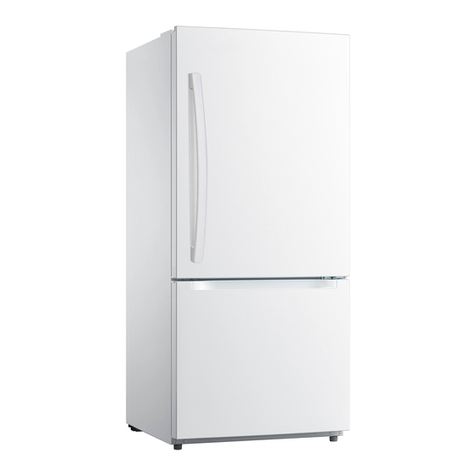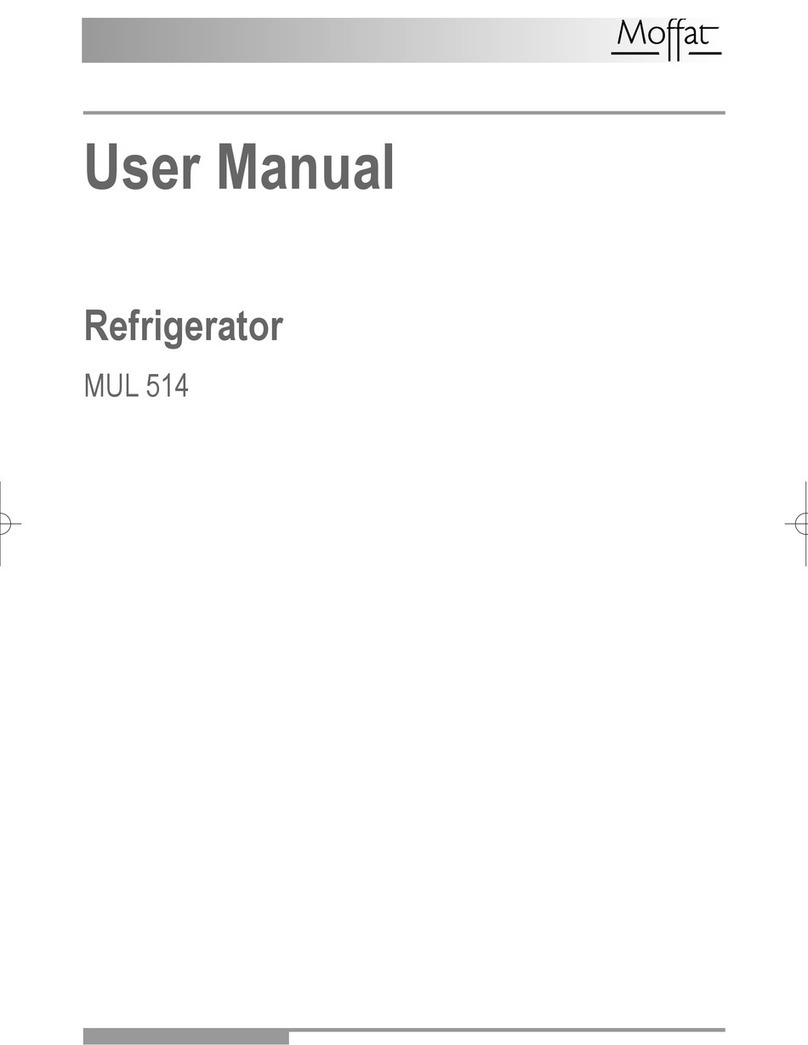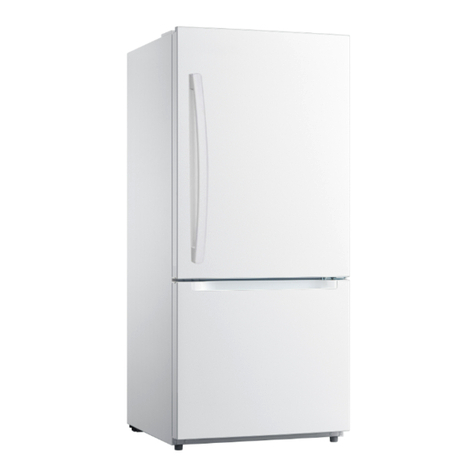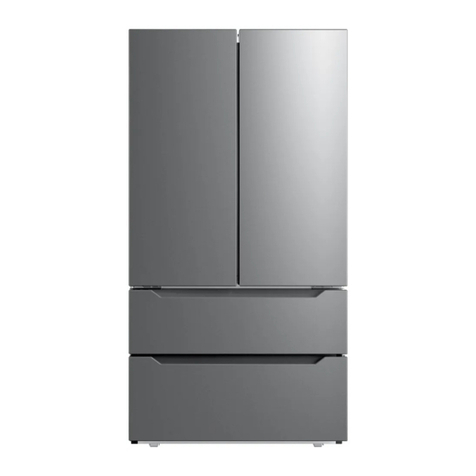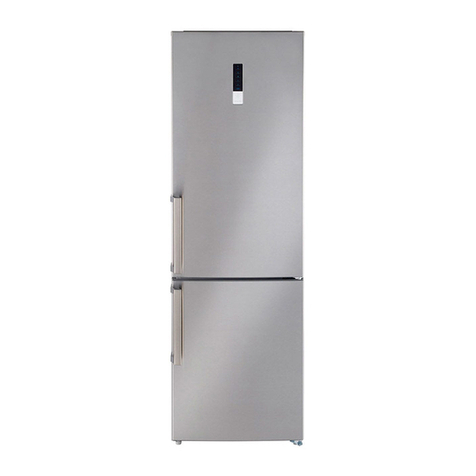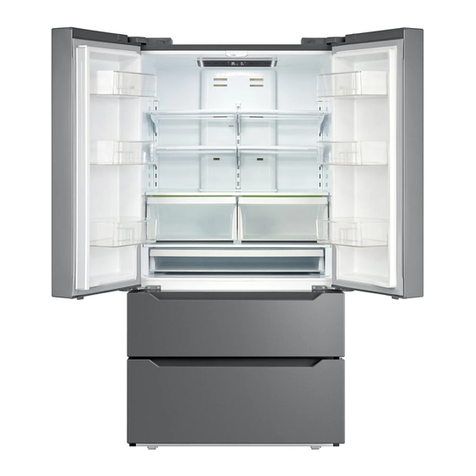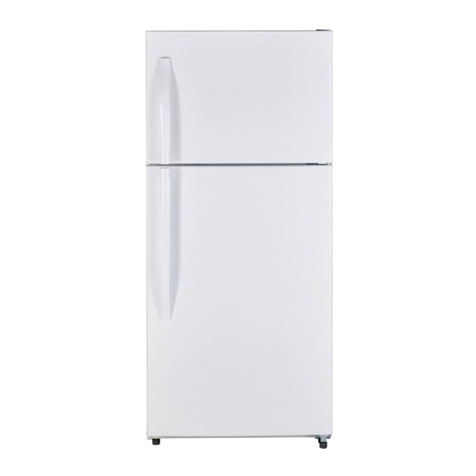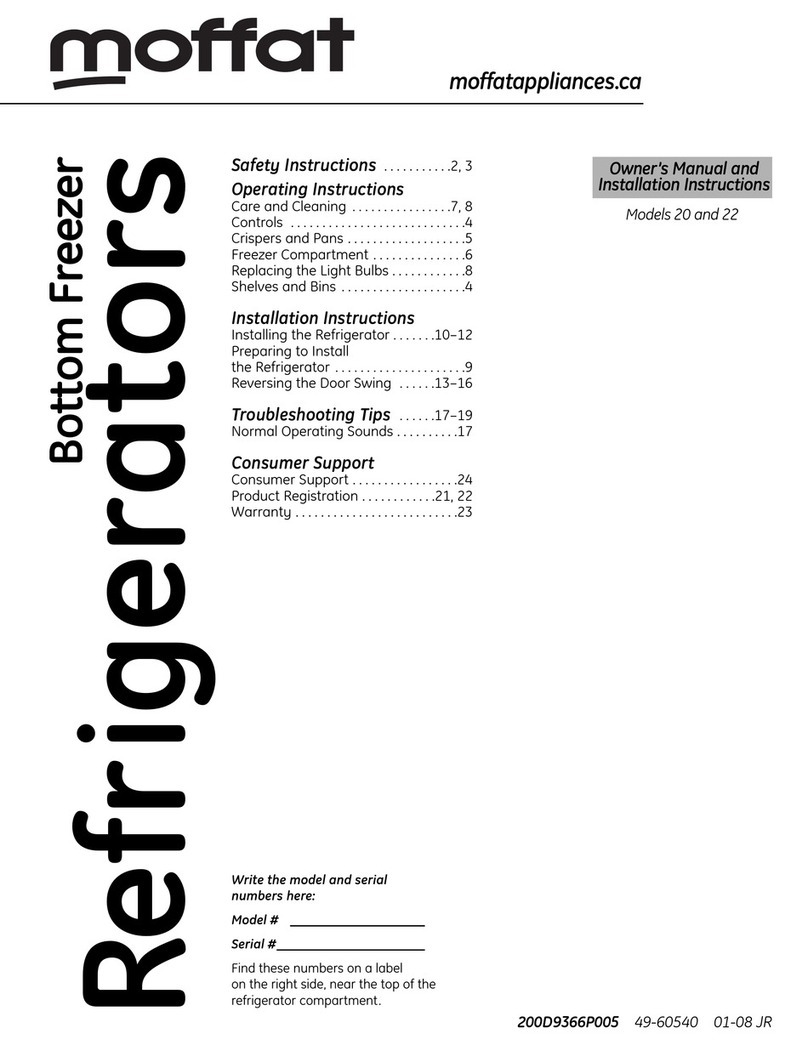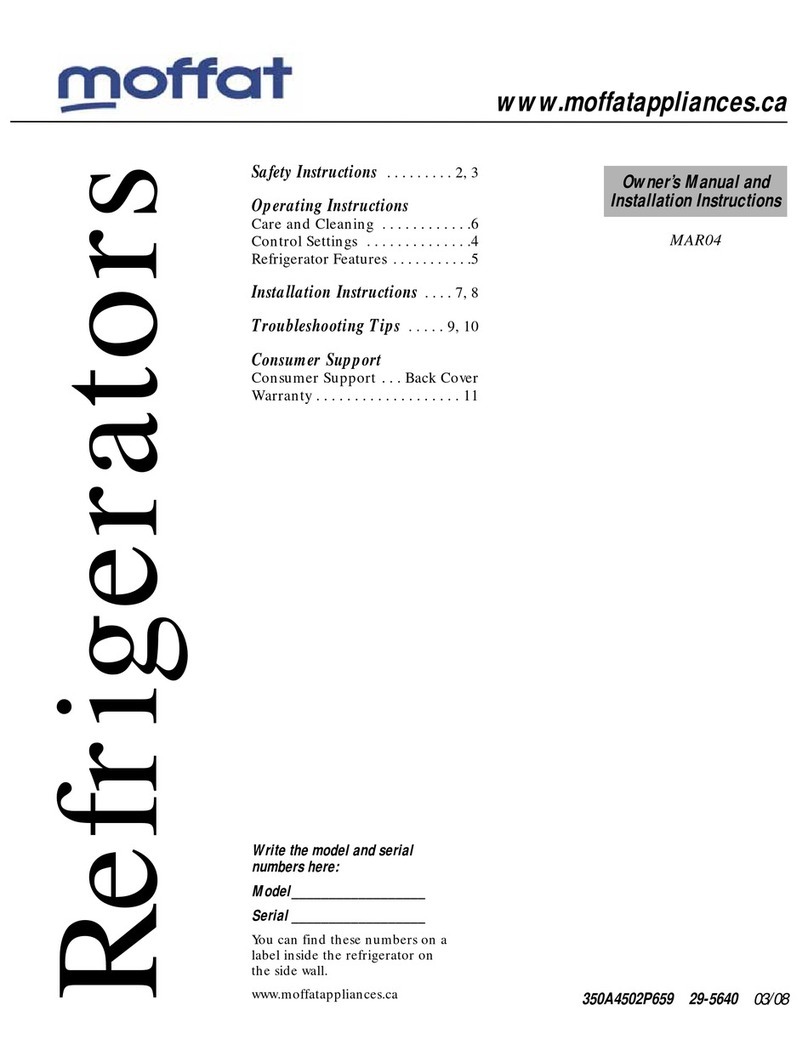IMPORTANT SAFETY INFORMATION.
READ ALL INSTRUCTIONS BEFORE USING.
WARNING!
Use this appliance only for its intended purpose as described in this Owner’s Manual.
SAFETY PRECAUTIONS
When using electrical appliances, basic safety precautions should be followed, including
the following:
This refrigerator must be properly installed
and located in accordance with the Installation
Instructions before it is used.
Do not allow children to climb, stand or hang
on the shelves in the refrigerator. They could
damage the refrigerator and seriously injure
themselves.
Do not touch the cold surfaces in the freezer
compartment, particularly when hands are
damp or wet. Skin may stick to these extremely
cold surfaces.
Do not store or use gasoline or other
flammable vapors and liquids in the vicinity of
this or any other appliance.
Keep fingers out of the “pinch point” areas;
clearances between the doors and between the
doors and cabinet are necessarily small. Be
careful closing doors when children are in the
area.
Unplug the refrigerator before cleaning and
making repairs.
NOTE: We strongly recommend that any servicing be
performed by a qualified individual.
Turning the temperature control to the
“0”
position stops cooling but does not shut off
power to the refrigerator.
PROPER DISPOSAL OF THE REFRIGERATOR
Child entrapment and suffocation are not
problems of the past. Junked or abandoned
refrigerators are still dangerous… even if they
will sit for “just a few days.” If you are getting rid
of your old refrigerator, please follow the
instructions below to help prevent accidents.
Before You Throw Away Your Old
Refrigerator or Freezer:
Take off the doors.
Leave the shelves in place so that children may
not easily climb inside.
CFC Disposal
Your old refrigerator has a cooling system that
used CFCs (chlorofluorocarbons). CFCs are
believed to harm stratospheric ozone.
If you are throwing away your old refrigerator,
make sure the CFC refrigerant is removed for
proper disposal by a qualified servicer. If you
intentionally release this CFC refrigerant you
can be subject to fines and imprisonment under
provisions of environmental legislation.
DANGER! RISK OF CHILD ENTRAPMENT
2
Consumer Support Troubleshooting Tips Operating Instructions Safety InstructionsInstallation InstructionsTroubleshooting Tips Installation Instructions Safety InstructionsOperating InstructionsTroubleshooting Tips Installation Instructions Safety InstructionsOperating Instructions

